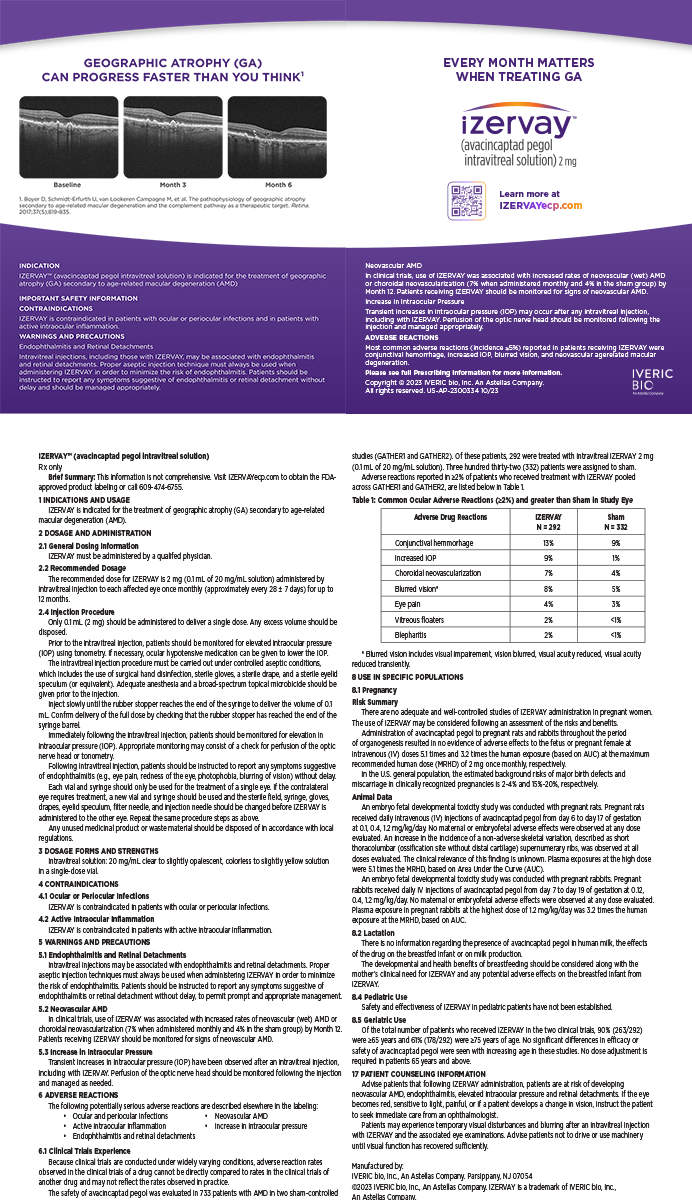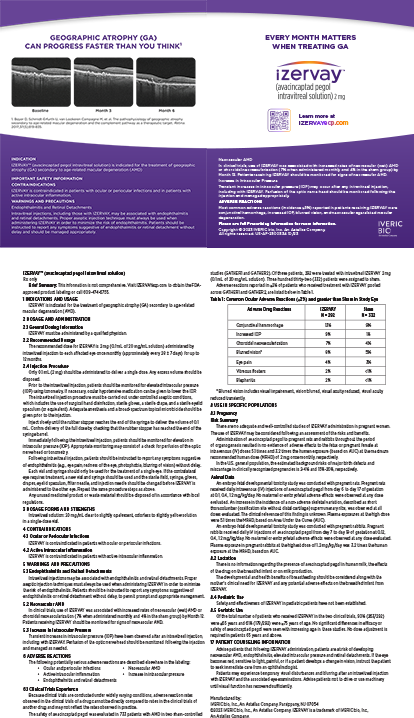Ever since the first scientific observation of what would now be called an antibiotic effect by French chemist Louis Pasteur in the 19th century, a war of bacterial mutations and their adaptation against human research and development has raged. Ophthalmology has played a role in this battle, beginning with Carl Crede's pioneering work in the 1800s to fight ophthalmia neonatorum with silver nitrate. As time passes, the ever-mutating bacteria seem to be a step ahead. When attacked by antibiotics, several sentinel bacterial colonies that would go unnoticed under normal, wild-type scenarios develop protective-resistance mutations that enable the pathogens to survive and thrive in otherwise hostile environments.
The latest and, to date, toughest combatant in the infectious disease arms race is methicillin-resistant Staphylococcus aureus (MRSA). This article reviews the evolution of this microorganism and discusses the treatment of ocular MRSA infection.
HISTORY
S aureus, literally the "golden cluster seed" or "the seed gold," was initially isolated in 1880 in pus extracted from surgical abcesses by the Scottish surgeon Sir Alexander Ogston.1 S aureus is frequently found in a person's nose and skin. About 20% of the population are long-term carriers of the bacteria.2 S aureus is one of the most common causes of nosocomial infections, often resulting in postsurgical infections of wounds, such as after cataract surgery. Each year, some 500,000 patients in US hospitals contract a staphylococcal infection.2
The penicillins were the first large class of antibiotics shown to be effective against a wide range of bacteria, including S aureus. Due to bacterial mutation, however, resistance to this class of antibiotic made it ineffective against β-lactamase–producing organisms, including many gram-positives such as S aureus. The β-lactamase–
resistant penicillins (methicillin, oxacillin, cloxacillin, and flucloxacillin) were developed to treat penicillin-resistant S aureus, and they are still used as first-line therapy. Methicillin was the first antibiotic in this class to be used (it was introduced in 1959), but only 2 years later, the first case of MRSA was reported in England.3 The mechanism of resistance to methicillin is mediated via the mec operon, part of the staphylococcal cassette chromosome mec (SCCmec). Resistance is conferred by the mecA gene, which codes for an altered penicillin-binding protein (PBP2a or PBP2') that has a lower affinity for binding β-lactams (penicillins, cephalosporins, and carbapenems). This lower affinity to the site of activity allows for resistance to all β-lactam antibiotics and obviates their clinical use during MRSA infections. As such, the glycopeptide vancomycin is often deployed against MRSA.4 Glycopeptide resistance is mediated by the acquisition of the vanA gene. The vanA gene originates from the enterococci and codes for an enzyme that produces an alternative peptidoglycan to which vancomycin will not bind.5
Despite these mutations, MRSA generally remained uncommon, even in hospital settings, until the 1990s. At that point, the prevalence of this microorganism exploded in hospitals, where it is now endemic.6 In the United States, 95 million people carry S aureus in their noses; of these, 2.5 million (2.6% of carriers) carry MRSA.7 These statistics mirror the findings in ophthalmic infections as well. In The Charles T. Campbell Ophthalmic Microbiology Laboratory at the University of Pittsburgh, approximately 70% of postsurgical cataract infections are coagulase-negative Staphylococcus. Approximately 11.4% are S aureus, and of these, almost 34.6% are MRSA. In other words, the cause of about 3% of all endophthalmitis is MRSA.
Another way to look at this subject is to consider what percentage of MRSA infections occur after cataract surgery. In a study at the University of California, San Francisco, 2.4% of all ocular MRSA infections manifested as postoperative endophthalmitis.8
WHO IS AT RISK OF CARRYING MRSA?
In one hospital in Texas, 12% of the staff were asymptomatic carriers of MRSA.9 In an Illinois ER, 15% of the staff were carriers.10 A study at Stanford University focused on cataract surgery patients who are culture positive for a resistant bacteria. Diabetes, asthma, chronic blepharitis, active conjunctivitis, ocular discharge, and immunosuppressive and autoimmune disorders all put patients at higher risk of bacterial resistance. Health care workers, residents of nursing homes, prisoners, and individuals involved in contact sports are at higher risk of being colonized with MRSA.11
HOW DO OPHTHALMOLOGISTS TREAT MRSA INFECTIONS OF THE EYE?
The algorithm for the systemic treatment for MRSA infections is much easier than is ocular treatment. Using standard microbiologic testing (minimum inhibitory concentrations) with pharmacokinetic and pharmacodynamic scientific evidence, infectious disease experts can choose from a handful of agents that could be effective against select MRSA strains. These drugs include fluoroquinolones, bacitracin, glycopeptides, and oxazolidinones (linezolid), to name a few.
The method of treating MRSA infections of the eye is slightly more debatable, since ophthalmic standards do not exist for the extremely high concentrations achieved with topical dosing. Clinicians would not be wrong to use the systemic standards as a guide, but they could be misguided in their search for an effective treatment due to an incorrect assumption that the pharmacokinetics and pharmacodynamics are the same for both systemic infections and ocular disease. Investigators at The Charles T. Campbell Ophthalmic Microbiology Laboratory have performed several studies of keratitis12 and endophthalmitis.13 They found that, due to the extremely high doses of topical antibiotics and the ability to apply these high doses much more frequently than with parenteral dosing, it is possible to eradicate MRSA with topical fourth-generation fluoroquinolones, despite the fact that these agents (moxifloxacin and gatifloxacin) would be considered ineffective using typical serum standards. This finding implies that ophthalmologists must use different antibiotic susceptibility and resistance standards, since the concentrations and doses are so much higher than what is expected with oral or intravenous dosing.
Another difference in characterizing antibiotics for the eye is the potential effect of the formulation vehicle. Some evidence suggests that the typical preservatives in topical preparations such as the "inactive" benzalkonium chloride may have some utility in eradicating bacteria, including MRSA.12,13 These classic preservatives may improve the potency of antibiotic agents, although this has not been proven in clinical trials and some ophthalmologists argue a dilutional effect with tears.14 In vitro studies show a clinical trial may be warranted.12,13
Can ophthalmologists overcome MRSA in clinical practice? In 2004, investigators at The Charles T. Campbell Ophthalmic Microbiology Laboratory presented findings that compared MRSA keratitis infections to methicillin-susceptible S aureus keratitis infections. There was no difference in time to epithelialization and resolution of infiltrate in eyes with keratitis. This study retrospectively evaluated patients with keratitis who had MRSA that was resistant to the fourth-generation fluoroquinolones by systemic standards. The investigators found that dosing with high frequency and high concentrations overcame systemic standard resistance and that these bacteria were effectively eradicated by the use of the fourth-generation fluoroquinolones.15
For a culture-proven MRSA infection that is worsening despite the frequent, high-dose application of a fluoroquinolone, however, ophthalmologists should strongly consider administering agents other than fourth-generation fluoroquinolones without delay. Options include bacitracin, cefazolin, gentamicin, vancomycin, and linezolid, among others. It is important to realize that regional variations may occur in terms of antibiotic susceptibilities. Working closely with local microbiologists and infectious disease experts is therefore recommended.
CONCLUSION
MRSA is the newest and toughest pathogen ophthalmologists have faced in their ongoing battle against ocular infection. With new standards and research into which patients are at risk, clinicians will be able to reduce the potential for infection by this microorganism.
Francis S. Mah, MD, is an assistant professor in the Department of Ophthalmology, and he is the medical director of The Charles T. Campbell Ophthalmic Microbiology Laboratory, both at the University of Pittsburgh School of Medicine. Dr. Mah may be reached at (412) 647-2259; mahfs@upmc.edu.
- Ogston A. On abscesses. Classics in infectious diseases. Rev Infect Dis. 1984;6(1):122-128.
- Kluytmans J, van Belkum A, Verbrugh H. Nasal carriage of Staphylococcus aureus: epidemiology, underlying mechanisms, and associated risks. Clin Microbiol Rev. 1997;10(3):505-520.
- Jevons MP. Celbenin-resistant staphylococci. BMJ. 1961;1:124-125.
- Chambers HF. The changing epidemiology of Staphylococcus aureus? Emerg Infect Dis. 2001;7(2):178-182.
- Chang S, Sievert DM, Hageman JC, et al. Infection with vancomycin-resistant Staphylococcus aureus containing the vanA resistance gene. N Engl J Med. 2003;348(14):1342-1347.
- Johnson AP, Aucken HM, Cavendish S, et al. Dominance of EMRSA-15 and -16 among MRSA causing nosocomial bacteraemia in the UK: analysis of isolates from the European Antimicrobial Resistance Surveillance System (EARSS). J Antimicrob Chemother. 2001;48(1):143-144.
- Graham P, Lin S, Larson E. A U.S. population-based survey of Staphylococcus aureus colonization. Ann Intern Med. 2006;144(5):318-325.
- Freidlin J, Acharya N, Lietman TM, et al. Spectrum of eye disease caused by methicillin-resistant Staphylococcus aureus. Am J Ophthalmol. 2007;144(2):313-315.
- Ibarra M, Flatt T, Van Maele D, et al. Prevalence of methicillin-resistant Staphylococcus aureus nasal carriage in healthcare workers. Pediatr Infect Dis J. 2008;27(12):1109-1111.
- Bisaga A, Paquette K, Sabatini L, Lovell EO. A prevalence study of methicillin-resistant Staphylococcus aureus colonization in emergency department health care workers. Ann Emerg Med. 2008;52(5):525-528.
- Miño de Kaspar H, Shriver EM, Nguyen EV, et al. Risk factors for antibiotic-resistant conjunctival bacterial flora in patients undergoing intraocular surgery. Graefes Arch Clin Exp Ophthalmol. 2003;241(9):730-733.
- Romanowski EG, Mah FS, Kowalski RP, et al. Benzalkonium chloride enhances the antibacterial efficacy of gatifloxacin in an experimental rabbit model of intrastromal keratitis. J Ocul Pharmacol Ther. 2008;24(4):380-384.
- Kowalski RP, Romanowski EG, Mah FS, et al. A comparison of moxifloxacin and levofloxacin topical prophylaxis in a fluoroquinolone-resistant Staphylococcus aureus rabbit model. Jpn J Ophthalmol. 2008;52(3):211-216.
- Friedlaender MH, Breshears D, Amoozgar B, et al. The dilution of benzalkonium chloride (BAK) in the tear film. Adv Ther. 2006;23(6):835-841.
- Silk W, Mah FS. Clinical response of MRSA and MRSE infectious keratitis to conventional antibiotic therapy. Paper presented at: The ASCRS Symposium on Cataract, IOL and Refractive Surgery; May 4, 2004; San Diego, CA.


